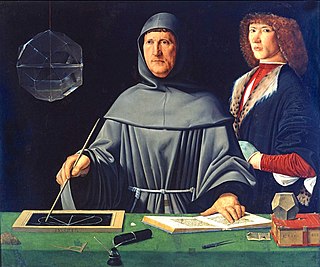
Fra Luca Bartolomeo de Pacioli was an Italian mathematician, Franciscan friar, collaborator with Leonardo da Vinci, and an early contributor to the field now known as accounting. He is referred to as "The Father of Accounting and Bookkeeping" in Europe and he was the first person to publish a work on the double-entry system of book-keeping on the continent. He was also called Luca di Borgo after his birthplace, Borgo Sansepolcro, Tuscany.
Year 1462 (MCDLXII) was a common year starting on Friday of the Julian calendar.
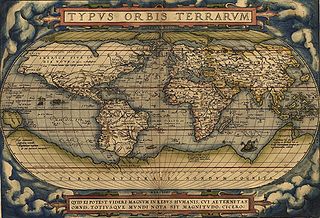
An atlas is a collection of maps; it is typically a bundle of maps of Earth or a region of Earth.
This article presents lists of the literary events and publications in the 15th century.
The plus and minus signs, + and −, are mathematical symbols used to represent the notions of positive and negative, respectively. In addition, + represents the operation of addition, which results in a sum, while − represents subtraction, resulting in a difference. Their use has been extended to many other meanings, more or less analogous. Plus and minus are Latin terms meaning "more" and "less", respectively.
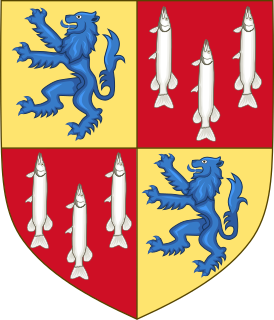
Henry Percy, 3rd Earl of Northumberland, was an English magnate.
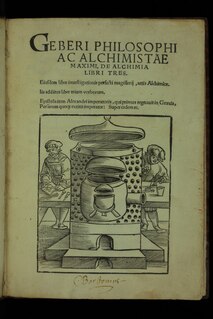
Pseudo-Geber refers to a corpus of Latin alchemical writing dated to the late 13th and early 14th centuries, attributed to Geber (Jābir ibn Hayyān), an early alchemist of the Islamic Golden Age. The most important work of the corpus is Summa perfectionis magisterii, likely written slightly before 1310, whose actual author has sometimes been identified as Paul of Taranto. The work was influential in the domain of alchemy and metallurgy in late medieval Europe.

Juan de Torquemada, O.P., , Spanish ecclesiastic, was born at Valladolid, and was educated in that city.
John of Seville was one of the main translators from Arabic into Castilian in partnership with Dominicus Gundissalinus during the early days of the Toledo School of Translators. John of Seville translated a litany of Arabic astrological works, and is also credited with the production of several original works in Latin.

Johannes Tauler OP was a German mystic, a Roman Catholic priest and a theologian. A disciple of Meister Eckhart, he belonged to the Dominican order. Tauler was known as one of the most important Rhineland mystics. He promoted a certain neo-platonist dimension in the Dominican spirituality of his time.

Benedetto da Maiano was an Italian sculptor of the early Renaissance.

Sir John Baker (1488–1558) was an English politician. He served as Chancellor of the Exchequer from 1545 to his death, having previously been Speaker of the House of Commons of England.
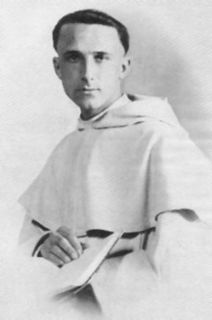
Réginald Marie Garrigou-Lagrange was a French Catholic theologian and Dominican friar. He has been noted as a leading neo-Thomist of the 20th century, along with Jacobus Ramírez, Édouard Hugon, and Martin Grabmann. He taught at the Dominican Pontifical University of St. Thomas Aquinas, the Angelicum, in Rome from 1909 to 1960. There he wrote his magnum opus, The Three Ages of the Interior Life in 1938.

Thomas Fitzalan otherwise Arundel, 10th Earl of Arundel, 7th Baron MaltraversKG was the son of William Fitzalan, 9th Earl of Arundel, and Joan Neville, eldest daughter of Richard Neville, 5th Earl of Salisbury, and Alice Montagu, suo jure Countess of Salisbury.
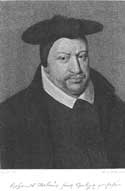
Joannes Molanus (1533–1585), often cited simply as Molanus, is the Latinized name of Jan Vermeulen or Van der Meulen, an influential Counter Reformation Catholic theologian of Louvain University, where he was Professor of Theology, and Rector from 1578. Born at Lille, he was a priest and canon of St. Peter's Church, Leuven, where he died.

Thomas Aquinas was an Italian Dominican friar, philosopher, Catholic priest, and Doctor of the Church. An immensely influential philosopher, theologian, and jurist in the tradition of scholasticism, he is also known within the latter as the Doctor Angelicus, the Doctor Communis, and the Doctor Universalis. The name Aquinas identifies his ancestral origins in the county of Aquino in present-day Lazio, Italy. Among other things, he was a prominent proponent of natural theology and the father of a school of thought known as Thomism. He argued that God is the source of both the light of natural reason and the light of faith. His influence on Western thought is considerable, and much of modern philosophy developed or opposed his ideas, particularly in the areas of ethics, natural law, metaphysics, and political theory.
John Hanboys, also John Hamboys and possibly J. de Alto Bosco, was a medieval composer and musical theorist from England.

Guido de Monte Rochen or Guy de Montrocher was a Spanish priest and jurist who was active around 1331. He is best known as the author of Manipulus curatorum, a handbook for parish priests, that was often copied, with some 180 complete or partial manuscripts surviving, and later reprinted throughout Europe in the next 200 years, with at least 119 printings, and sales which have been estimated to be three times those of Thomas Aquinas' Summa Theologica. It became obsolete only when the Council of Trent created the Roman Catechism in 1566.
John of Wales, also called John Waleys and Johannes Guallensis, was a Franciscan theologian who wrote several well-received Latin works, primarily preaching aids.
Robert Pakington was a London merchant and Member of Parliament. He was murdered with a handgun in London in 1536, likely the first such killing in the city. His murder was later interpreted as martyrdom, and recounted in John Foxe's Acts and Monuments. He was the grandfather of Queen Elizabeth I's favourite, Sir John "Lusty" Pakington.













